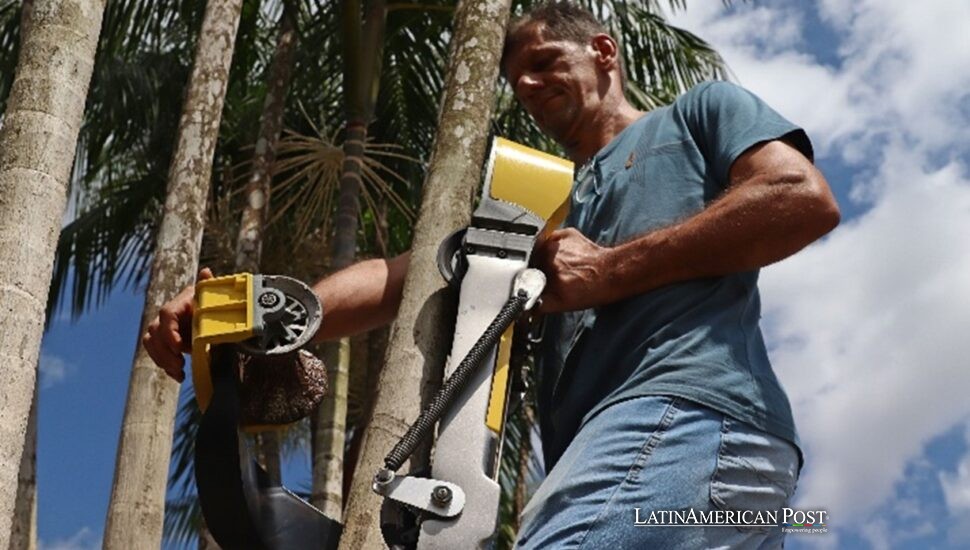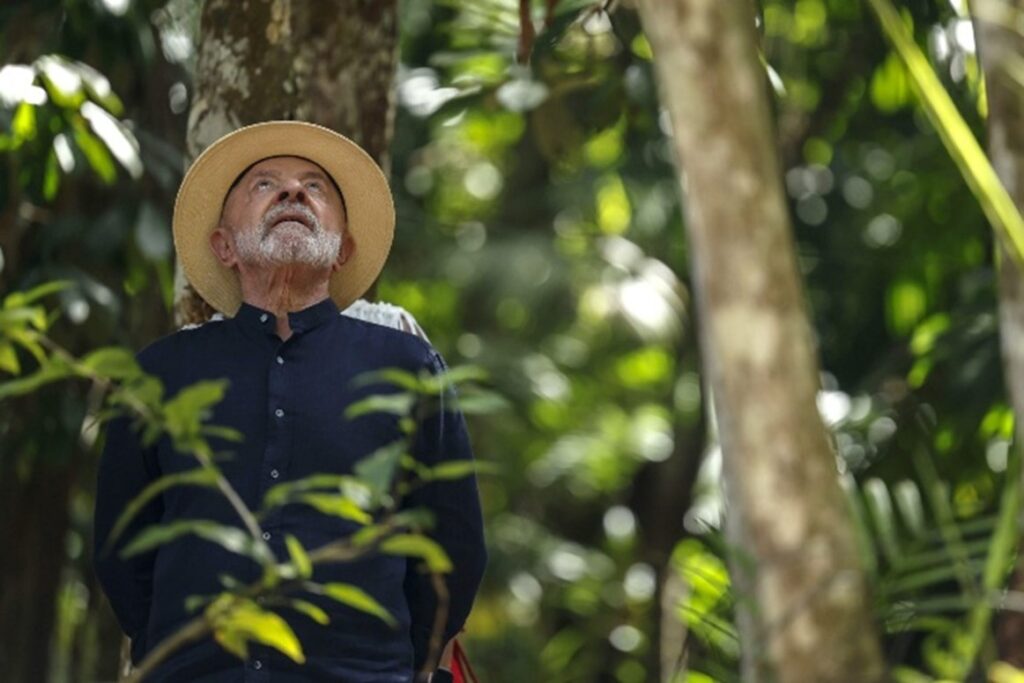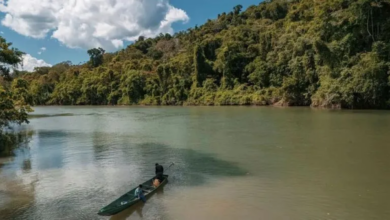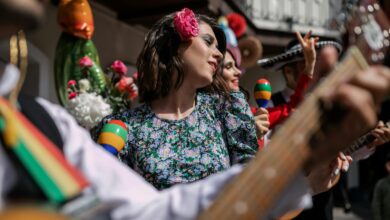The Robot That Climbs for the Forest: How Brazil's Amazon Turns Innovation into Survival

Deep in Brazil’s Amazon, a new kind of harvester is rewriting the rules of work and conservation. Built by local engineers and carried upriver in canoes, the AçaíBot is saving lives, multiplying yields, and bringing women into an age-old trade.
Built in the Amazon, for the Amazon
In Belém, where the Amazon River opens to the sea, engineers have built something that seems to breathe the same air as the forest around it. The AçaíBot, developed by local startup Kaatech with agro-industrial partner Açaí Kaa, is the first acai-harvesting robot born of and for the Amazon.
Light enough to sling across a canoe yet strong enough to climb a forty-foot palm, the machine grips a slender trunk, ascends, snips off a heavy fruiting branch, and lowers it without bruising a single berry. Every movement feels deliberate, almost reverent. “We didn’t design a conqueror,” one engineer said. “We designed a collaborator.”
That collaboration could change everything. Company figures suggest productivity may rise tenfold—from a handful of bunches to more than a hundred before midday. Each robot weighs just seven to eight kilograms, runs on swappable batteries, and can be operated by one or two people, turning once-dangerous solo climbs into teamwork.
The technology feeds a growing bioeconomy where every part of the palm matters. While the pulp becomes shelf-stable powder for export, seeds are repurposed as biomass fuel. The result is a chain where safety and sustainability finally align. “When fruit arrives unbruised and on time,” explained a cooperative leader to EFE, “boats leave full, storage works better, and families earn more.”
Across muddy trails and backwater creeks, that small change is revolutionary. For the first time, families who once watched fruit rot at the foot of trees now see every palm as both legacy and livelihood.
From Perilous Climbs to Safer, Better-Paid Work
For generations, harvesting acai meant dancing with gravity. Workers scaled slick palms barefoot, gripping a fiber loop known as the peconha between their feet to inch skyward. Every climb was a gamble—one slip, and the forest could take a father, a son, or a mother.
The robot does not erase this heritage, but it does rewrite the balance of risk and reward. Instead of climbing, crews now coordinate from below—one guiding the robot, another sorting fruit or ferrying it to boats and cold storage. Injuries drop, productivity rises, and young people who once skipped school to climb now stay in class.
The companies behind AçaíBot insist the machine’s social dividend is as crucial as its mechanical one. It opens doors that have long been closed to women, who can now join harvest teams as operators, managers, or processors. “Before, climbing was for men,” said one woman farmer near Belém. “Now I can work beside my husband instead of watching from below.”
That transformation is gaining political traction. During a recent visit to riverine and quilombola communities near Belém, President Luiz Inácio Lula da Silva urged the world to see the Amazon “as it really is”—a place of resilience, not romanticism. “It’s easy to hold a COP in Paris or London,” Lula told residents, “but bring it here and you’ll meet the mosquitoes, the heat, and the real challenges,” according to EFE.
As part of that pledge, the government unveiled new bioeconomy financing lines, including credit for acquiring acai-harvesting robots. It was a small policy note with big symbolism: proof that Brazil’s environmental agenda was beginning to reach the very hands that keep its forest standing.

What A Tenfold Jump Means on the Ground
If only a fraction of the Amazon’s acai is ever harvested before it spoils, then the first victory of the AçaíBot is rescue—fruit saved from the ground, income saved for the people.
More harvest means more work for local cooperatives, transporters, and small processors like Açaí Kaa, whose value-added products—powders, oils, and extracts—keep revenue circulating in the region. The machine’s clean cuts preserve palms for future harvests, curbing the temptation to fell trees for easier access. “We’re learning that the forest pays more alive than dead,” one harvester told EFE.
The ripple effects stretch beyond economics. Hours once spent climbing or recovering from falls can now feed other livelihoods—tending cassava plots, guiding eco-tourists, repairing boats, or simply parenting. That time —and the dignity that comes with it —are what many say truly change the equation.
“This isn’t just a gadget,” said a community organizer near the Tocantins River. “It’s a way to make staying in the forest possible.”
And yet, the AçaíBot honors the craft it upgrades. The peconha remains a symbol of pride, often hung beside the robot in workshops as a reminder of where the technology comes from. Field tests prioritize minimal impact—no bark scraping, no leaf-crown damage, no shortcuts that could harm the palm or its next season’s yield. Done right, the robot extends the rhythm of harvest rather than replacing it.
Guardrails For a Genuine Bioeconomy
A robot, no matter how advanced, cannot build a market by itself. For this innovation to take root, Brazil must weave a support system as resilient as the forest it serves. That means training, repair centers, and warranties that reach the farthest riverbanks. It means financing that favors cooperatives, not just corporations, and trade rules that reward verified sustainable production.
As EFE reported ahead of the COP30 summit in Belém, the Amazon’s communities are still waiting for the basics—clinics, schools, paved roads, and security. Technology can help, but it cannot substitute governance. The same families who risked their lives climbing trees deserve hospitals as much as robots.
Still, hope moves with the current. Each successful harvest proves that progress and preservation can share the same branch. AçaíBot’s quiet ascent mirrors something larger: a region learning to see technology not as an intrusion but as inclusion—a way to keep both people and palms alive.
If the vision holds—if credit arrives, if maintenance is local, if ownership stays in the forest—then Belém’s role as host of COP30 will mean more than a symbolic homecoming. It will stand as evidence that the tools of the future can rise from the same soil they aim to protect.
At dawn, on a riverbank thick with mist, a worker fastens the AçaíBot to a palm and steps back. The robot begins its climb, whirring softly as the fruit cluster loosens and descends intact. Below, children watch, wide-eyed. For the first time in generations, the next harvest looks safer, smarter, and—just maybe—endless.
Also Read: White Feathers in the Blue Sky: A Virus Threatens Brazil’s Wild Spix’s Macaw Comeback





